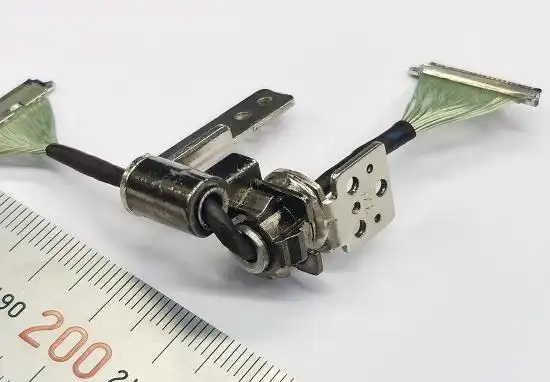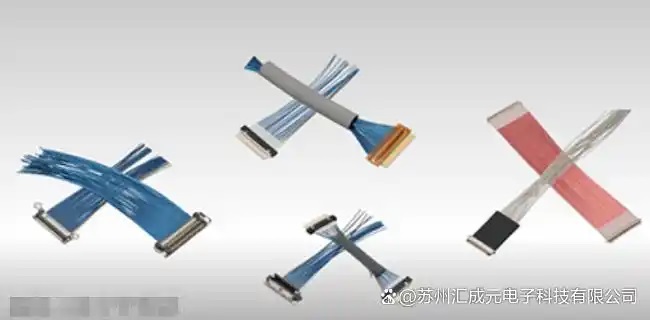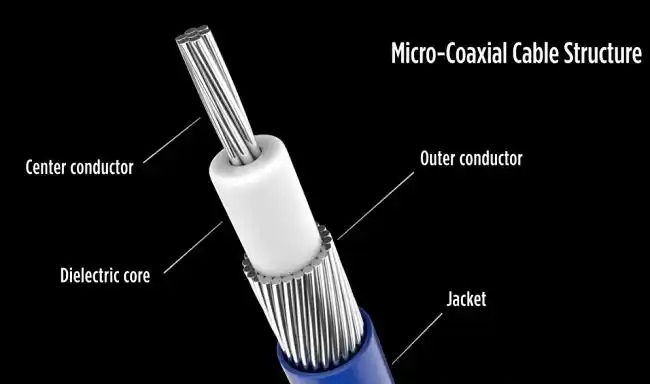In the field of high-speed signal transmission, EMI (Electromagnetic Interference) anomalies have always been a challenging problem for engineers to tackle. Particularly in products that are constantly miniaturizing, such as consumer electronics, medical equipment, and smart terminals, ultra-thin coaxial cables (Micro Coaxial Cable) are being widely adopted due to their excellent signal integrity and flexibility. However, when data rates reach 10Gbps and above, the EMI issue becomes even more difficult to manage. So, when ultra-thin coaxial cables experience EMI anomalies in high-speed signal environments, how should they be addressed? Today, we will discuss this in detail.

What is a micro coaxial cable (Micro Coaxial Cable)?
Very fine coaxial cables are a type of miniature coaxial cables with an outer diameter ranging between 0.3~1.2mm, and their typical structure includes:
• Inner conductor (central signal line)
Insulation layer
Shielding layer (usually woven layer + foil)
Outer sheath
This kind of wire material not only has excellent shielding performance like traditional coaxial structures, but also has the characteristics of small diameter, good flexibility, and ease of bending, thus it is widely used in space-limited equipment such as smartphones, laptops, medical probes, and vehicle imaging systems.

Why is it easier to experience EMI anomalies under high-speed signals?
As the signal frequency increases, the rising edge of the signal becomes steeper. High-speed digital signals are essentially the superposition of a large number of high-frequency harmonics, which can lead to the following problems:
Screen layer leakage
Common-mode interference increases
Grounding System Spurious Coupling
High density wiring causes crosstalk
These factors act together, making it easy for ultra-fine coaxial cables to exhibit the following EMI abnormal phenomena at speeds above 10Gbps:
Wireless performance test failed.
• EMC radiation exceeds the standard
High-frequency signal interference with adjacent channels

How to investigate and solve EMI anomalies?
1. EMI anomaly point troubleshooting methods
Use a spectrum analyzer + near-field probe to locate interference sources
Through network analyzer to detect the cable S parameters
Predict frequency sensitive segments with signal integrity simulation
Switch to different models or lengths of Micro Coax cables for A/B comparison tests
Effective Improvement Plan
2.1 Cable Selection Optimization
Prioritize products with **screening weaving density ≥ 90%** to enhance shielding integrity.
2.2 Adopt a double shielding structure
That is, "a woven layer + foil layer," and in conjunction with low dielectric constant insulating materials, to reduce signal loss and reflection.
2.3 Wiring and Grounding Strategy
• Recommend single-point grounding for extremely fine coaxial cables.
Avoid laying out parallel to high-speed differential signal lines or antenna cables.
Maintain a reasonable spacing from the metal shell or grounded copper skin.
2.4 Additional EMI Suppression Devices
Add common-mode magnetic rings at both ends of the harness.
Cover sensitive sections with **EMI Absorber** sheets.
Where necessary, use a shielding hood to enhance the shielding effect.
Optimize harness length and routing
Avoid excessively long, dense, or tangled wires.
Adjust the harness space layout, reduce length differences, and prevent common-mode excitation.

In high-speed signal applications, the EMI issue of extremely thin coaxial cables is not uncontrollable. By selecting reasonable cable types, designing standard wiring, conducting precise testing and troubleshooting, and supplementing with efficient EMI suppression devices, electromagnetic interference can be kept within the product certification requirements, achieving stable and reliable high-speed signal transmission.
I am Kunshan JieKangFu Precision Electronics. We have been focusing on the design and customization of high-speed signal cables and ultra-thin coaxial cables for a long time, committed to providing stable and reliable high-speed interconnect solutions to our customers. If you have any related needs or want to learn more, please contact: Manager Yin.
18913280527 (WeChat number)。



